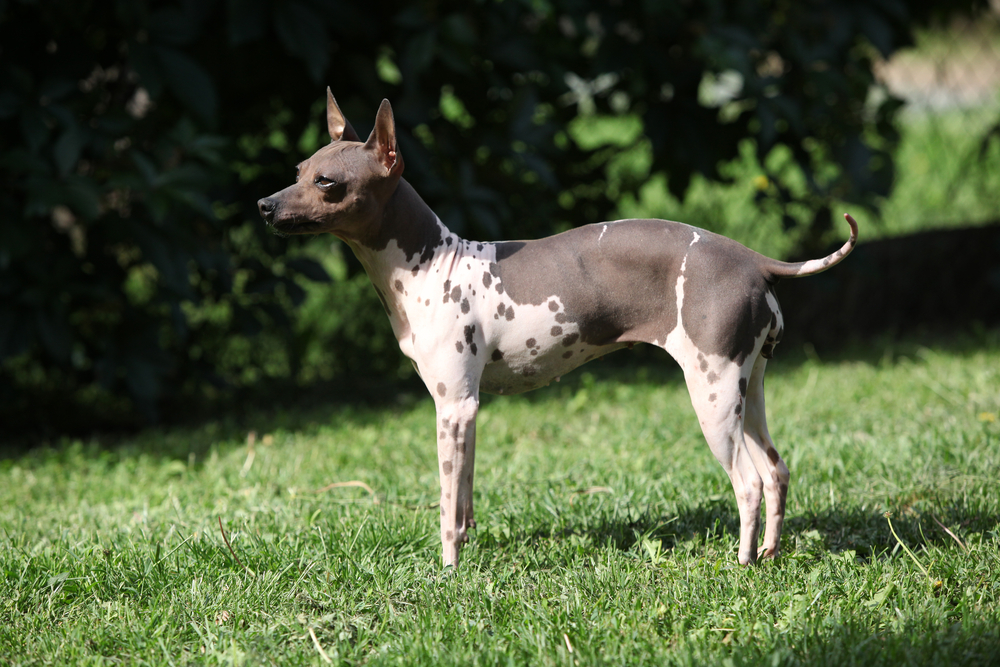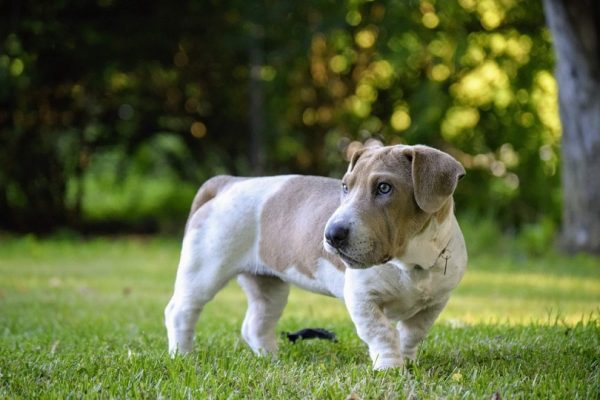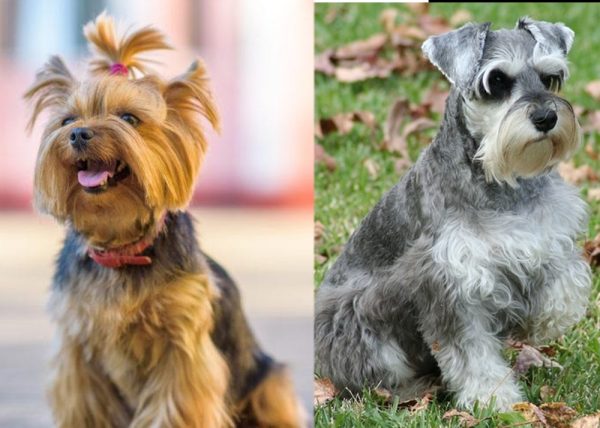The Abyssinian Sand Terrier is one of the rarest and most mysterious dog breeds. They only sport hair on the top of their head and the very tip of their tails. Some Abyssinian Sand Terriers are completely hairless. That makes them highly unique. They are also incredibly rare. Abyssinian Sand Terriers have not been seen in modern society for decades leading some to wonder if they’ve gone extinct. All of this intrigue fuels one of the most interesting dog breeds in the world.
Breed Overview
Height:
15–20 inches
Weight:
20–40 pounds
Lifespan:
12–15 years
Colors:
Black, gray, bronze, sand, mottled
Suitable for:
People who enjoy rare or eclectic breeds, those looking for a hairless dog
Temperament:
Brave, loyal, eager to please, loving, protective, peaceful, quiet
The Abyssinian Sand Terrier is also known as the African Hairless Dog. It is speculated that this breed originated in Africa. Some people claim that the Abyssinian Sand Terrier was the first hairless dog and is the progenitor of modern hairless breeds like the Chinese Crested Dog and the Mexican Hairless Dog. That means that even if the Abyssinian Sand Terrier is truly nearing extinction, its genetics and traits are still alive and well in current dog breeds.
Abyssinian Sand Terrier Breed Characteristics

The Earliest Record of Abyssinian Sand Terriers in History
The exact origins of the mysterious Abyssinian Sand Terrier are not known. Abyssinian Sand Terriers are a very old dog breed, thought to originate in Eastern Africa. Abyssinia is now modern-day Ethiopia, but it is unclear if this is exactly where these dogs originated. Old exploration logs from the colonial era mention Abyssinian Sand Terriers in detail and claim they used to exist in large numbers. There are old photos of Abyssinian Sand Terriers that still exist. These pictures date back as recently as the 1940s and 1950s, but after that, the breed slowly dwindles and eventually vanishes from the record.
Today, the breed is incredibly rare, even in Africa. In fact, they have been labeled as an extinct breed by some. There are no modern examples of Abyssinian Sand Terriers existing in the modern Western world, and if there are any more records of this breed, they have been lost over time.
How Abyssinian Sand Terriers Gained Popularity
Abyssinian Sand Terriers were never the most popular dog breeds out there. In fact, these dogs were never really domesticated and were considered “semi-wild.” Despite this, Abyssinian Sand Terriers were thought to be extremely calm. They were routinely described as peaceful or tranquil. Abyssinian Sand Terriers were eager to please and relatively intelligent. They never barked.
In fact, some people reported that the dogs would only bark if taught to do so by humans and given treats for doing so. It is thought that they got along with humans and learned to live alongside them but were never really kept as pets.
There are slim chances that you might be able to find these dogs still in existence in rural parts of the African continent. That means that getting your hands on an Abyssinian Sand Terrier is essentially nil. If the experts are to be believed, they might truly be extinct, and therefore getting one of these dogs is, sadly, impossible.
https://www.instagram.com/p/B74k6e2jaH4/
Formal Recognition of Abyssinian Sand Terriers
The Abyssinian Sand Terrier has never been formally recognized by the American Kennel Club (AKC) or any other kennel clubs. This is due to the fact that no one knows for sure if they even still exist. However, it is thought that we may have this breed to thank for other hairless dog breeds, such as the Chinese Crested, which is recognized by the American Kennel Club and others.

Top 8 Unique Facts About Abyssinian Sand Terriers
1. Abyssinian Sand Terriers Could Be Extinct
According to various compendiums of dog breeds, there are no readily available examples of living Abyssinian Sand Terriers. In the West, where dog breeds are heavily tracked, traded, and loved, there is no Abyssinian Sand Terrier known to be under human care. There are also no known breeders of Abyssinian Sand Terriers. There could be some examples still living in rural portions of Africa or in their semi-wild state alongside ranchers and shepherds in Africa.
2. Abyssinian Sand Terriers Are the Likely Ancestor to All Current Hairless Breeds
Genetic studies of hairless dog breeds and the Abyssinian Sand Terrier have shown a strong connection between the hairless gene. That means that even if the Abyssinian Sand Terrier is extinct, their genes live on in other common hairless dogs. There are numerous hairless dog breeds that have robust populations around the world. Interestingly, many current hairless breeds originate from Central and South America yet still retain a fairly strong genetic connection to the Abyssinian Sand Terrier.

3. Native Abyssinian Sand Terriers Were Semi-Wild
While many people today value dog breeds for their potential as family companions, many dogs were bred for a specific job or adapted out of a certain environment. Native Abyssinian Sand Terriers were what many people call “semi-wild.” They did not live inside with their people, but they would follow them around as they worked outside. Abyssinian Sand Terriers would accompany people on hunting trips and accompany shepherds on long walks with their herds. These dogs bonded with people on a more primitive level, but they often didn’t live inside with native African farmers like we would imagine dogs do today.
4. They Are Thought to Be Very Easygoing and Got Along Well With Other Animals
The Abyssinian Sand Terrier got along well with other animals, including other dogs. The calm nature of the Abyssinian Sand Terrier lends itself to getting along with both people and pets alike. They are not too big and did not show many signs of aggressive tendencies. They would get along with their owners, children, and strangers.
5. They Never Really Relied on Humans for Food
Abyssinian Sand Terriers existed in their highest numbers in a time before traditional dog foods. They would have eaten food scraps and whatever small morsels they could have hunted and caught on their own around the house.
6. They Are Thought to Be Very Relaxed
Abyssinian Sand Terriers would need moderate amounts of exercise. As curious dogs, they enjoyed playtime and new situations. However, their calm demeanor meant that they were also happy to simply lay on the couch and relax.
7. They Are Thought to Be Intelligent and Easy to Train
Despite not really being kept as pets, Abyssinian Sand Terriers were easy to train due to the combination of their intelligence and willingness to please.
8. Most Health Issues Stem from Their Lack of Hair
Abyssinian Sand Terriers would be far more prone to catching skin related diseases than other dogs, including mange, allergies, dry skin, skin cancer, sunburn, and more. The lack of fur also makes Abyssinian Sand Terriers prone to hypothermia. They wouldn’t do well in cold climates. Abyssinian Sand Terriers originated in warm parts of Africa and are not designed for cold weather climates.

Do Abyssinian Sand Terriers Make a Good Pet?
It is thought that the Abyssinian Sand Terrier would make a good family dog, if they do still exist and could be fully domesticated. They were thought to be quiet, calm, and friendly. They were also easy to train, which means that a good owner could easily mold an Abyssinian Sand Terrier into a fantastic canine companion.

Final Thoughts
The Abyssinian Sand Terrier is one of the most enigmatic and rare dog breeds in the world. There are no living examples of the Abyssinian Sand Terrier living in the Western world as pets. There might be examples still living in Africa as wild or feral dogs in the brush, but there are no Abyssinian Sand Terriers under human care that we know about. Despite that, these dogs are still extremely interesting and provide a unique genetic and historical background that can be traced to our modern world.
Featured Image Credit: Linda Hughes Photography, Shutterstock


















